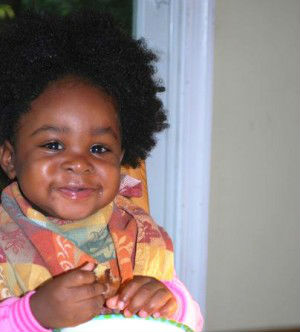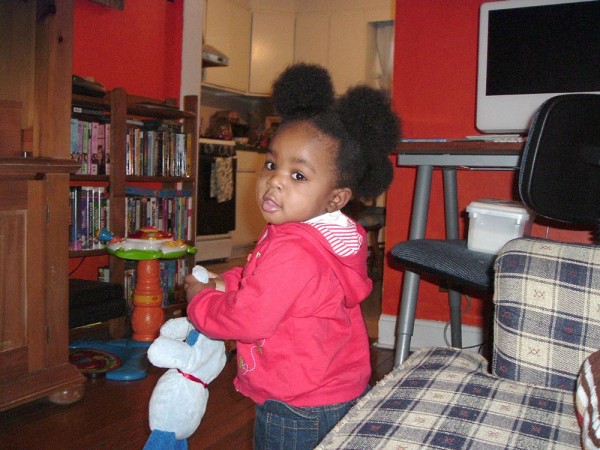African American Hair Care
Can you handle the hair?
I never knew hair care would be a hurdle I’d have to overcome in an adoption.
I remember receiving my first call as a foster parent nearly six years ago. It was a sibling duo: a 3-year-old boy and 1-year-old girl. Were we interested? We were.
“They’re African American though. Can you handle the hair?” the caseworker asked us.
“Of course! No problem. I’ll just ask a friend,” I responded without another thought.
“The one-year-old’s still young,” the caseworker continued. “I haven’t seen her, but she likely won’t have much hair yet. Hopefully it won’t be too hard.”
Hard? Hair? Psh… We hung up the phone and I forgot about the entire conversation. I was so sure it would be easy.
Four Neat Little Twists
My foster daughter Mariyah (who would later become my forever daughter) arrived with her hair freshly parted into four sections and neatly twisted. Because I was used to my hair which needed to be styled everyday, I took the twists out while getting Mariyah ready for bed that night. Her hair, which had made those four neat little twists, exploded into a giant, soft, gorgeous Afro.
The next morning, I tried to remake the twists, but they looked horrible. The day before her hair had felt soft. It now felt dry. The twists I made wouldn’t lie flat, either. One stood straight up. Another stood straight out.
Mariyah’s brother, James, came over and tried holding a twist down into place. He smiled confidently at having fixed the problem. But when he took his hand away, the twist sprung back up. He looked at me, shook his head as if there was no hope, and went back to his toys. Suddenly, I understood the caseworker’s hesitation.

Mariyah’s hair began to look worse and worse over the next few days. The caseworker stopped by for a visit.
“What are you doing about that hair? Have you thought about taking her to the shop? Did you ask your African American friend?”
Oh yes, right. My friend.
Finding Help
I actually hadn’t left the house or talked to anyone since the children came to us. I was still completely overwhelmed by everything. After the caseworker left, I sent my friend an email. I got an automated “away from desk” response about her being on a trip. I considered contacting other friends, who I wasn’t as close to. However, I was too afraid of judgement to ask for help.
I ended up piling the kids into the car and heading to the mall since the caseworker had recommended a store there. There was an African American employee working when we walked in. My mind was racing.
Do I ask for help? Am I going to seem like the dumb white woman? How should I word this? Should I say “black” or “African American”? Was asking for help going to somehow come off as racist? Was I being entirely too ridiculous?
“Uhhh I’m looking for hair care stuff for her,” I said as I pointed to Mariyah sitting in the stroller. “Do you have any suggestions? She’s 12 months. I don’t really know what to buy.”
“Oh my gosh that is a lot of hair for a 1-year-old!” the employee exclaimed. Then she spent the next half hour kindly walking me around the store, telling me about different products, running off a list of what I needed, how often I needed it, and why. She recommended a few brushes and combs I could pick up at another store and even drew a picture to help me identify them.
The Labor of Learning and Love
Occasionally, during visitation with her birth family, Mariyah’s birth mom would braid her hair. It looked gorgeous. She would often talk about wishing she could take Mariyah to have her hair done at the salon, which I thought was silly since she did it so well herself. I looked at her braids and hoped that eventually I would be that good.
For the next two years, I slowly learned to braid and twist. And when I say slowly, I mean that sloths move faster then I did. But I was learning. The first time an African American woman passed me on the street and commented, “Oh my gosh those twists are so cute!” I beamed with pride for the entire day.
Eventually, Mariyah’s birth mother moved away, and her hair was left completely up to me. I considered taking Mariyah to the have her hair braided at a shop, but it was important for me to keep learning to do her hair myself.

Hair Days are Heydays
One day, while the kids’ caseworker was visiting, she looked at Mariyah’s hair and said “If she was my daughter and it was a Saturday, I’d be at the hair shop.” I took it as an insult, and wondered why I would waste a Saturday at the shop if I could do her hair myself.
I repeated the comment to a friend a few days later. My friend laughed and filled me in.
“It’s not an insult. We like having our hair done. Sitting in the hair shop is fun. It’s a great place to talk and meet people. Plus, it’s about pride. Natural hair is gorgeous and you need to instill that pride in her!”
After that, I began to switch off between doing Mariyah’s hair myself and taking her to have it braided. By doing her hair myself, I am able to teach her how to take care of it. At home, we have the time to learn to detangle and condition so that when she grows up, she’ll be able to do it herself. But my friend was right, too. The salon is fun! It reinforces the ways we are teaching Mariyah to care for her hair. Plus, we get to meet other families of color. Having my daughter see girls and women with beautiful hair just like hers is priceless. I finally understand the value of both.









